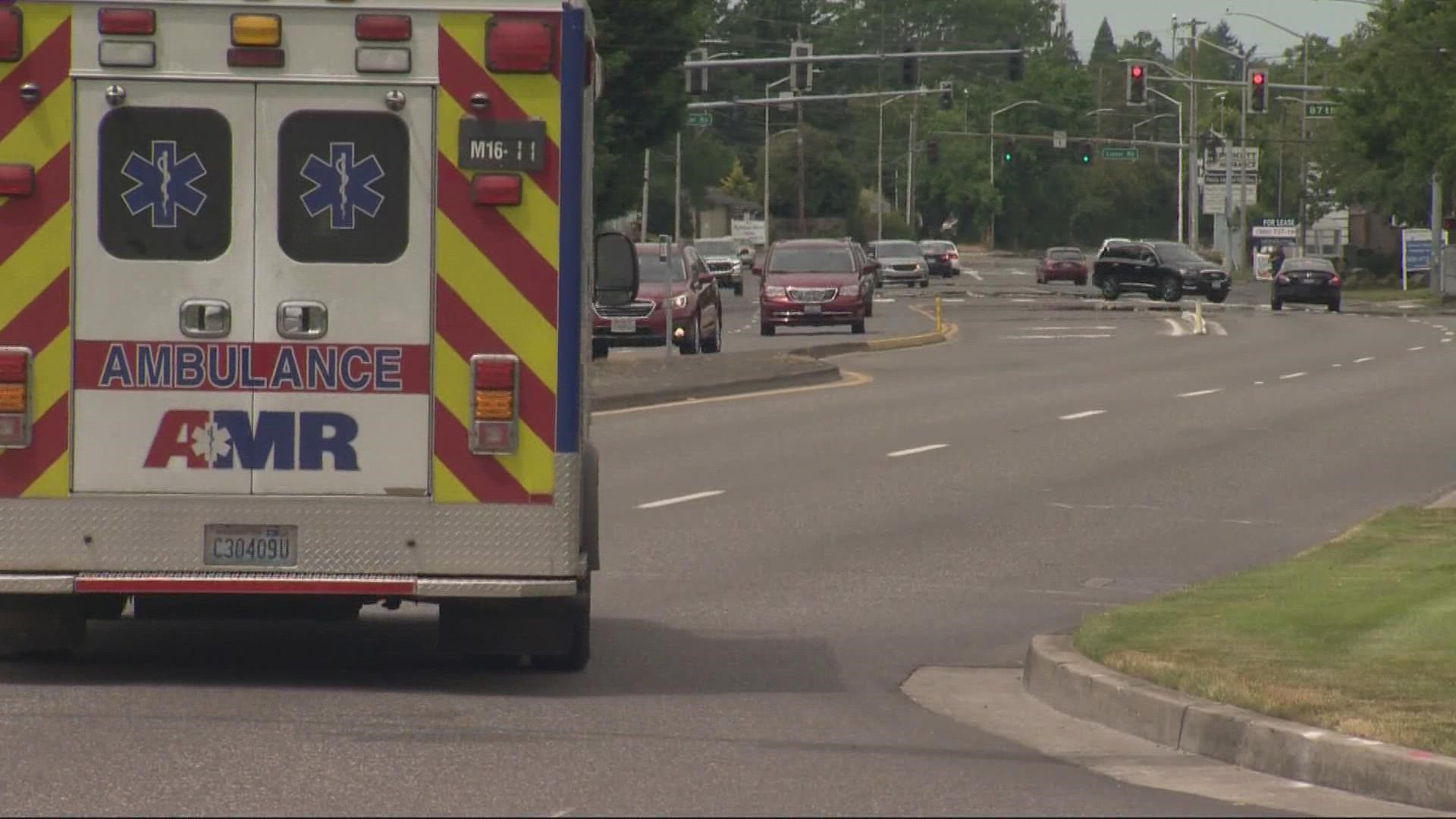PORTLAND, Ore. — Oregon is getting hammered by another COVID-19 wave, but the latest forecast from Oregon Health and Science University continues to point to a respite after mid-June.
The report projects that the state will top out at 313 active hospitalizations on June 14, with hospitalizations declining after that. That's a slightly lower and later peak than predicted in the previous report on May 20, which called for a peak of 329 on June 9.
In fact, the state has already slightly exceeded the new prediction — the Oregon Health Authority reported 316 hospitalizations statewide as of Friday.
But if the numbers stay close the current projection, it will mean the BA.2 wave will crest with a hospitalization level far below the delta wave peak of 1,178 and the first omicron peak of 1,130.
The nature of the hospitalizations is also different from previous waves, with a far smaller percentage of patients in intensive care beds and a higher proportion of hospitalizations "with COVID" rather than "for COVID," meaning people who go to the hospital for something else but test positive while they're there.
"Symptoms are high right now — there is actually quite a bit of infection going on — but the really good news is that our hospitalizations and deaths are much lower than we’ve ever seen given that much infection," said Dr. Peter Graven, director of the OHSU Office of Advanced Analytics, who produces the forecasts.
Earlier this year, state health officials began to prioritize hospitalizations and deaths, rather than new cases, as the best metrics for gauging the impact of the the COVID-19 pandemic.
That approach may continue to evolve, Graven said, as the different metrics become increasingly uncoupled from each other.
"We started by looking at hospitalizations and deaths as our big outcome, and now it’s really changing to looking at symptoms and people maybe having Long COVID or other types of health care impacts, also just being sick and not being able to go to school or work," he said.
Hospitalization trends have generally mirrored the direction of the state's overall trend in new cases, lagging a couple weeks behind, but the relationship is becoming less consistent.
"We used to have this nice time frame of cases peaked and about ten or 12 days later (hospitalization) census would peak, and now it’s a lot fuzzier," Graven said.
Still, with the projected hospitalization peak now less than two weeks away, conventional wisdom would suggest that Oregon's rate of new COVID cases should be peaking right around now — and there are some signs that may indeed be happening.
After rising steadily for nearly two months, Oregon's seven-day average for new cases began trending mostly downward after May 22, falling from 1,689 on that day to 1,347 as of Friday.
"Hopefully our cases will start drifting downward as well (as hospitalizations)," Graven said. "That should happen any day now and then we start to look at what might come up this summer."

